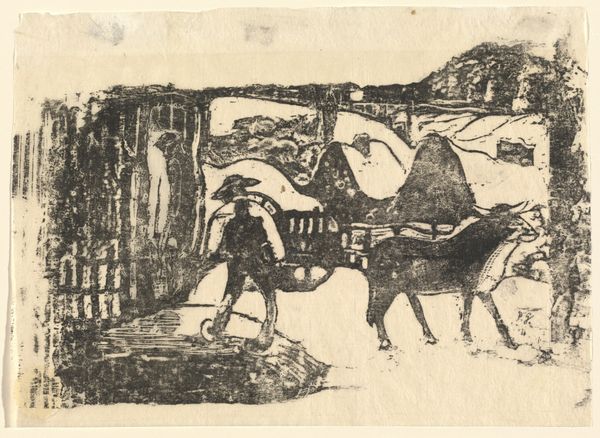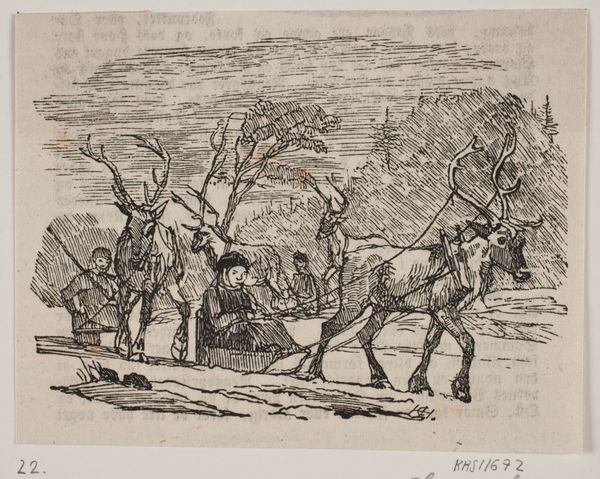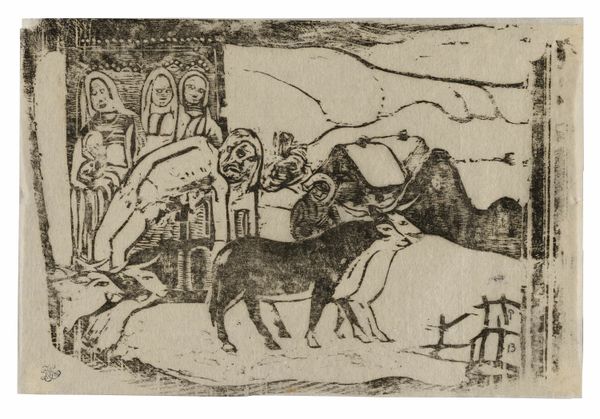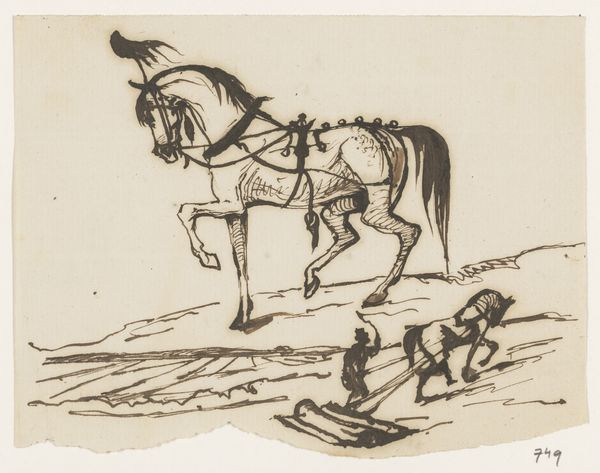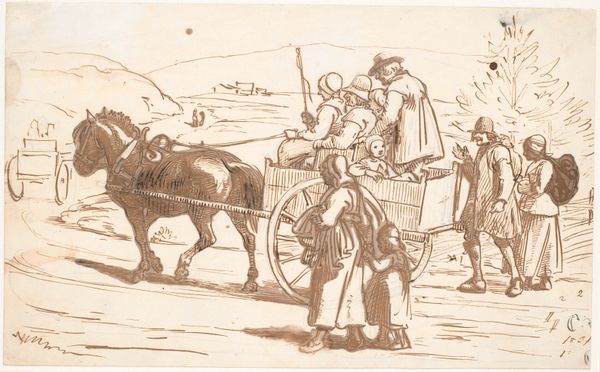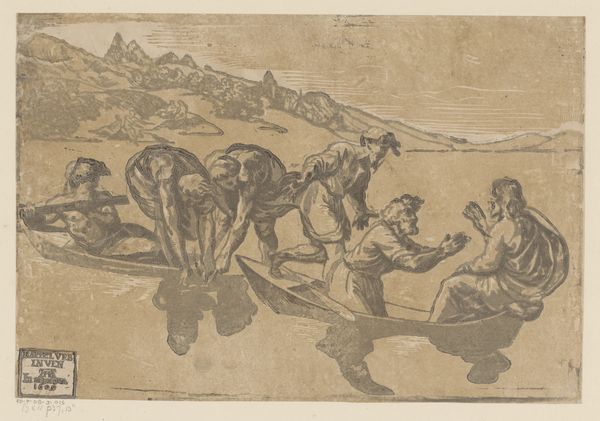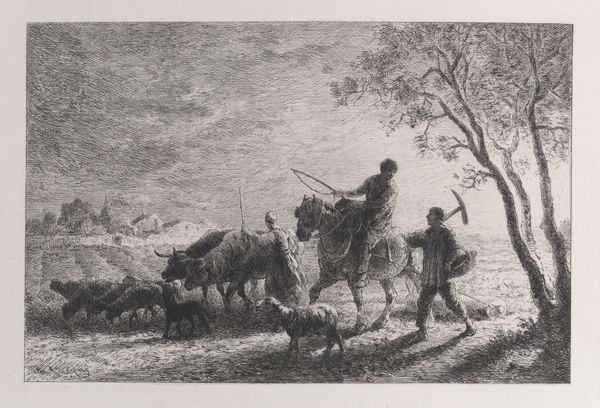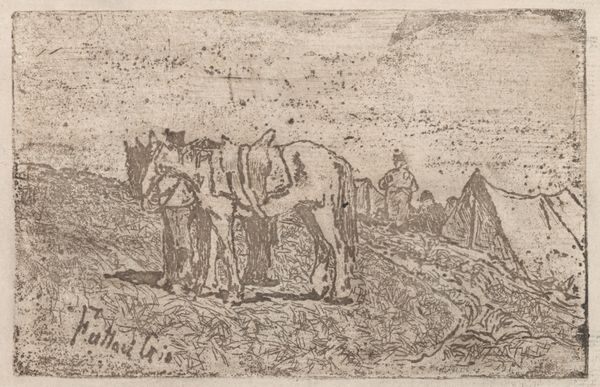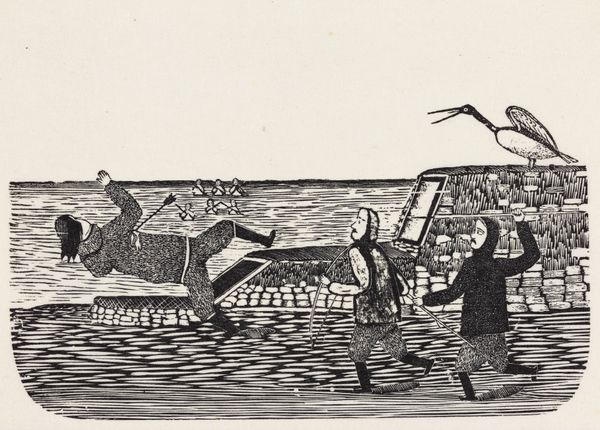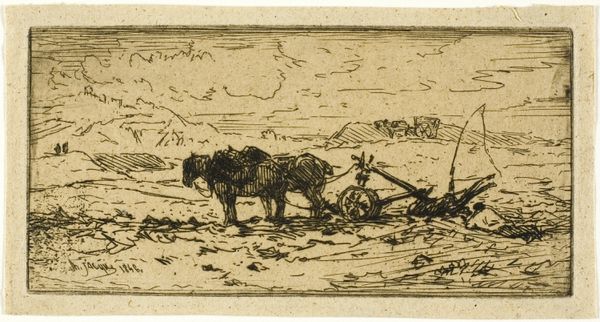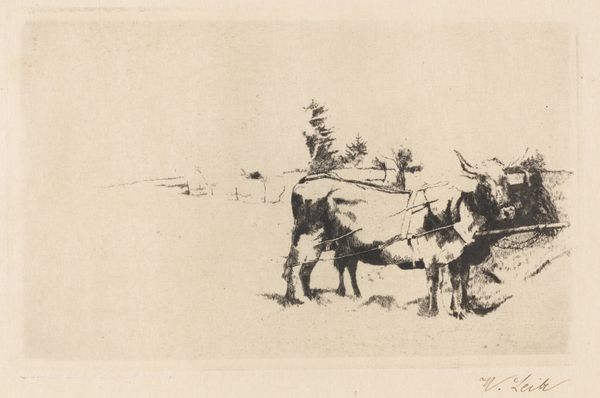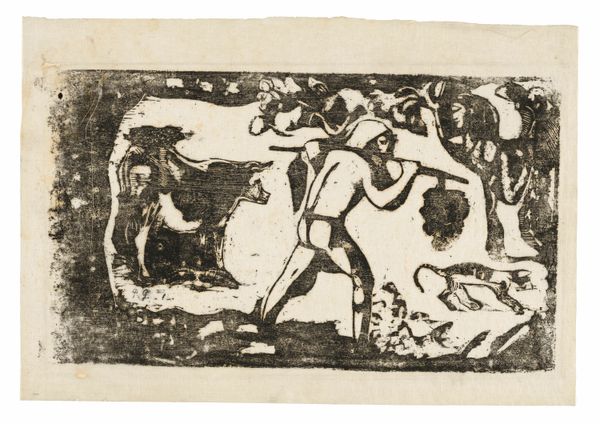
The Ox Cart, from the Suite of Late Wood-Block Prints 1898 - 1899
0:00
0:00
drawing, print, paper, woodblock-print, woodcut
#
drawing
#
ink drawing
#
narrative-art
# print
#
landscape
#
figuration
#
paper
#
woodblock-print
#
woodcut
#
post-impressionism
Dimensions: 195 × 305 mm (image); 228 × 307 mm (sheet); 300 × 310 mm (secondary support)
Copyright: Public Domain
Editor: So, this is *The Ox Cart*, a woodblock print by Paul Gauguin from 1898-99. It’s… striking, isn’t it? The heavy blacks and whites give it a really raw, almost primitive feel. What do you see in this piece, beyond the immediate scene? Curator: Well, that raw quality is key. Gauguin was deeply interested in disrupting Western artistic conventions and seeking alternative modes of representation. Considering his colonial context, we have to ask how his vision of an "authentic" or "primitive" life is constructed. How might this idealised portrayal of labour and rural life reflect and perpetuate colonial power dynamics? Editor: So, you're saying it's not just a simple depiction of a scene, but maybe also a statement, or a reflection of Gauguin's worldview at the time? Curator: Precisely. Look at how he contrasts the figure leading the ox cart with the more shadowy figures on the left. Who gets to be seen? Who is rendered opaque? These stylistic choices serve political purposes. We need to consider the narratives that are included and excluded from the frame. What kind of power relations does the composition evoke? Editor: That’s a fascinating way to look at it. I was focused on the visual impact of the woodcut itself, the starkness. Curator: The aesthetic and the political are inseparable. It's important to acknowledge Gauguin’s artistic contributions while simultaneously questioning the problematic underpinnings of his work and the larger colonial project it's embedded within. The beauty of art history lies in holding those dualities in tension. Editor: Right. I'm definitely going to remember that. Thanks for widening my perspective. Curator: It's in exploring those tensions that we truly understand both the power and the peril of representation. It challenges us to think critically about what we see and how we interpret it.
Comments
No comments
Be the first to comment and join the conversation on the ultimate creative platform.
